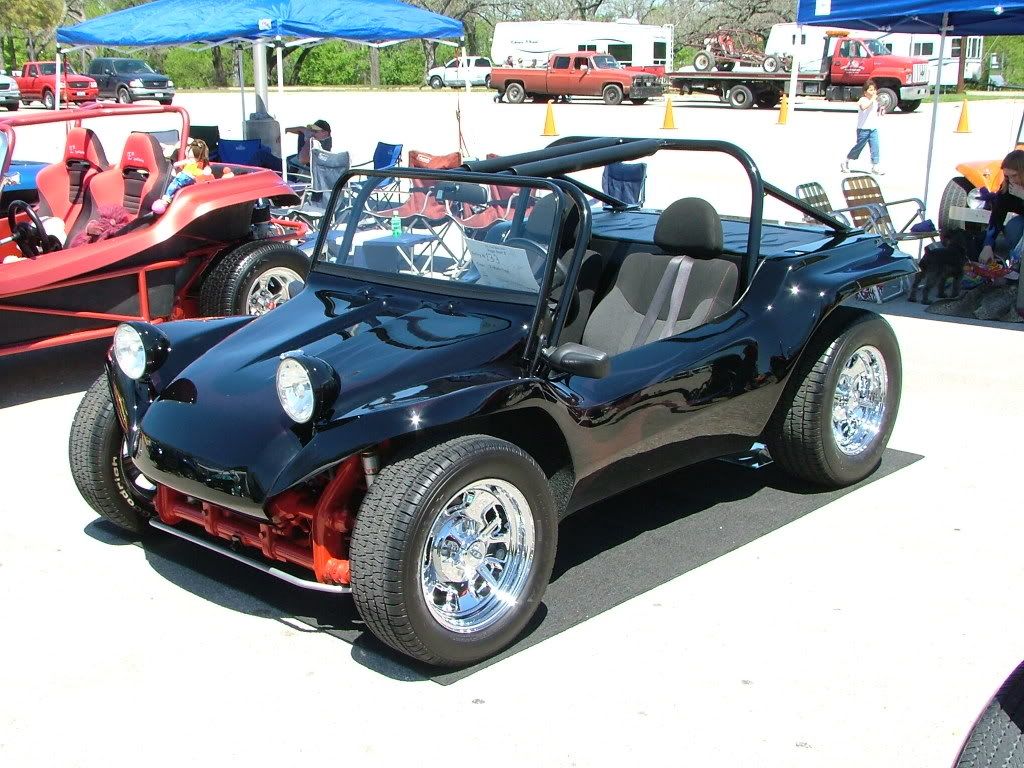I know that there are a lot of people out there that are going to the narrowed front beams, but they are doing so to get the tire to get under the body. That is fine when the car is going in a straight line, but it causes problems when you try to turn the car either to the right or the left.
The main one is that the wheels, while they do not hit the fenders on the outside, they do hit the inner wheel wells of the car. (unless you make really wide turns)
Like all things that are being done today, for the most part, the basic and important issues concerning the performance and safety of the car are often traded out just for looks.
Think of you car as viewed from the top, with the body off of the car.....you are looking at four wheels which have to work together to get the most out of the handling of the car and the tires.
If you take a draw a line at the centerline of the two rear wheels and take it way out to the side of the car.......you have half of the diagram of the suspension of the car.
Now take the front wheels of the car and imagine that you are turning, say to the left as far as you can. When you do this, and you can see that the left front wheel of the car turns farther to the left than the right front wheel does. Same goes for the right turn situation. The reason for this is called ackerman principle. The reason that the left wheel turns more than the right is that the left front of the chassis is closer to the pivot point that the car would make in turning the corner......just draw an imaginary line straight down the center of the left front spindal, and follow that line to where it would intersect the line you drew at the rear wheels. If you now draw a line down the right front spindal, following that center line, it should intersect the line at the rear at the same point. This is the actual turning point of the chassis around a corner. If this is happening, then the ackerman is right and the car is allowed to make the turn you want without the front tires fighting each other.
The ackerman is set by the car manufacters, by the angle of the spindle arm to the center line of the spindle. They calculated the turning radius of the car in width, and made the arms to move the tires the right amount in relation to the width of the front beam.
Now you can have some fun, by narrowing the front beam two inches and you will find that no matter how well you set the front end of the car to go straight, that the front wheel centerlines will not intersect the rear line at the same point and the tires are fighting each other in the turns. This causes the tires to scrub of rubber as they are not following the true arc of the turn at the same ratio in relation to the width of the car.
Dune buggies are light anyway, and so you need to keep the tires running true to each other of the car will get "out of shape" real fast. (Usually when you need them to work right in the worst way. )
Oh, before you ask........I don't recomend bending the arms with or with out heat to try to set them to the narrowed beam.
If you want the tires to be under the fenders, and that is real important to you.......get less wide tires and the problem goes away.
The last point is that due to the way that the front beam of a beetle was made, lowering the car at the beam causes the caster to diminish as well. That is an easy fix, however, just put caster shims under the lower cross beam and put more caster back in.
Also, if you lower the front beam with an adjustable one, then you will need to run shorter shocks to keep them from bottoming out on serious bumps, and you will want to use ball joints that have more travel in them to allow you not to be beating the joints out by making them travel in an arc that they were not designed to do.
If this hasn't cleared this up, please let me know and I will try to get a diagram drawn to help with that.


